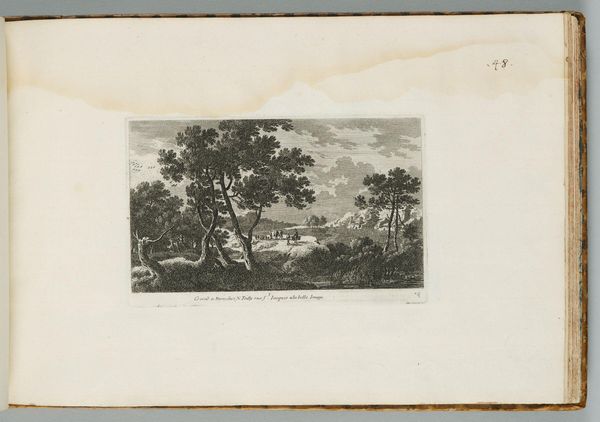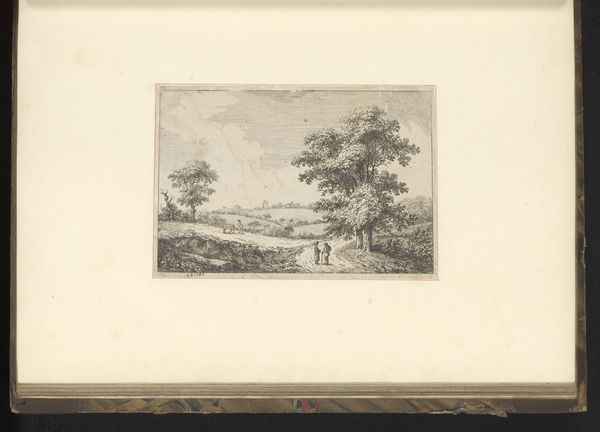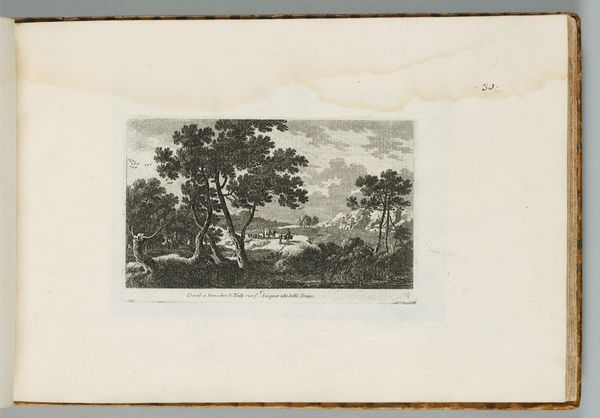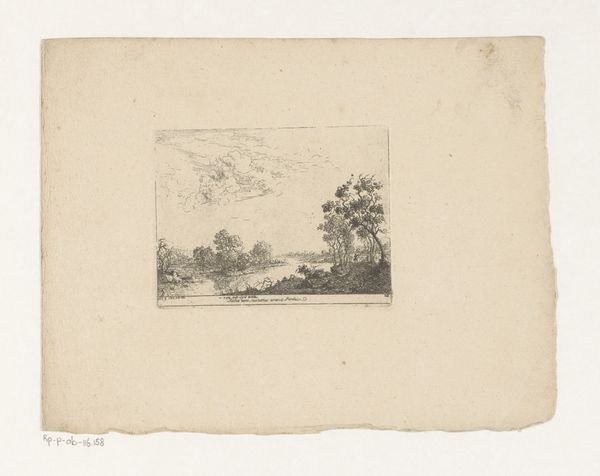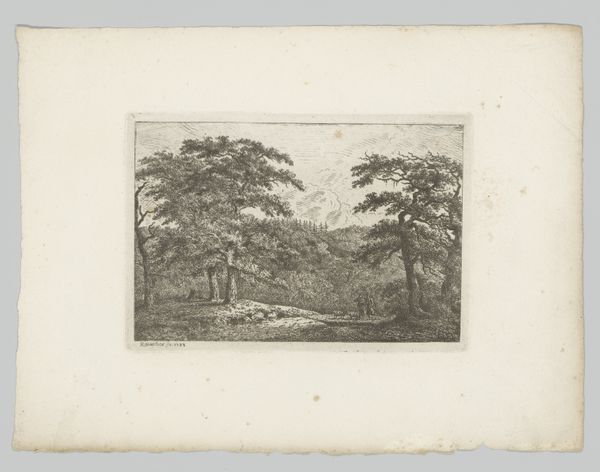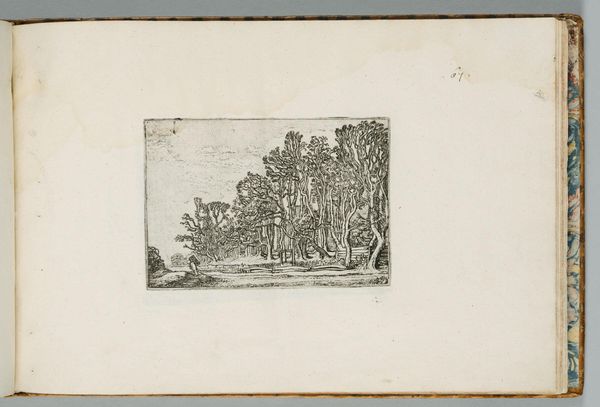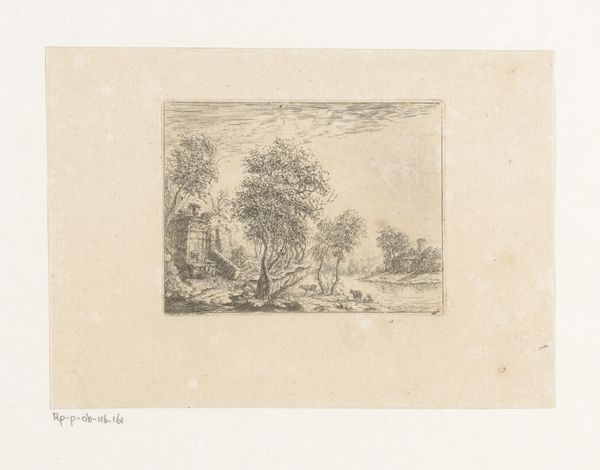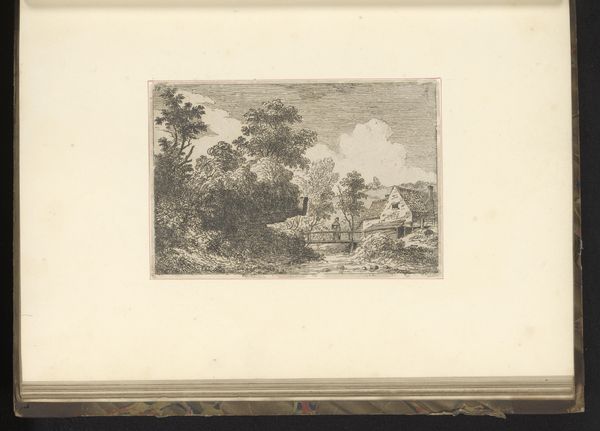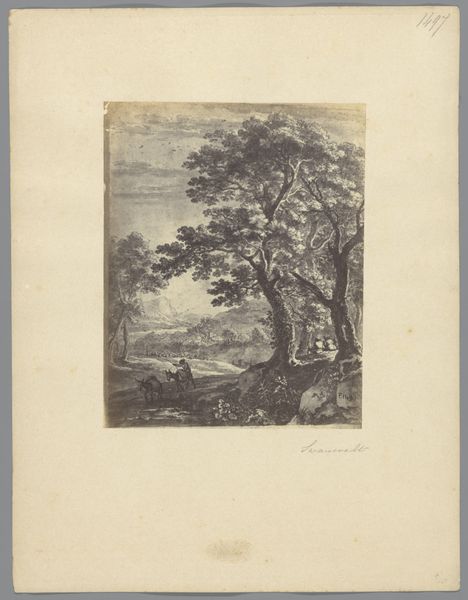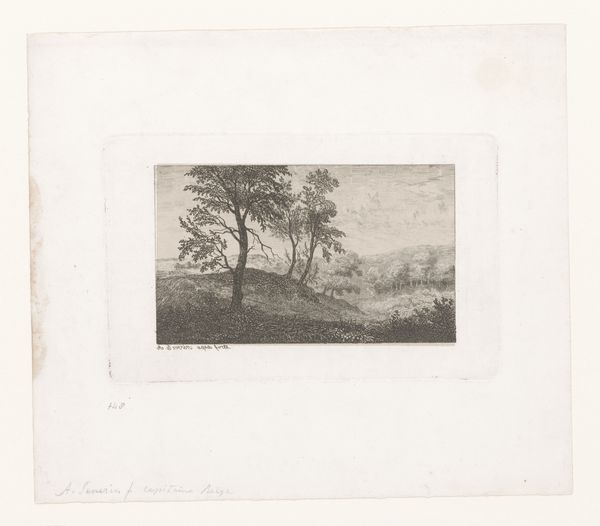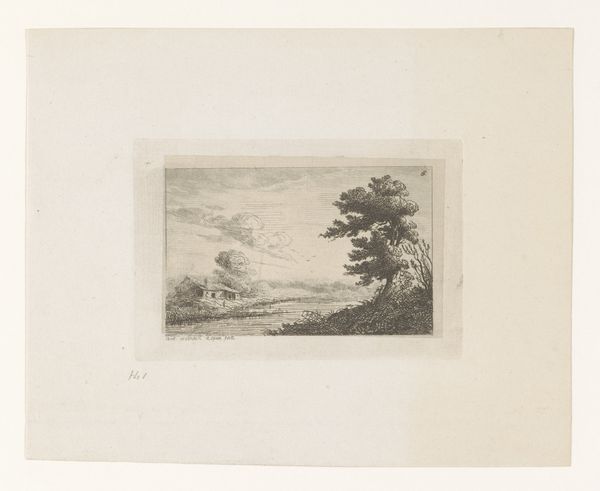
#
aged paper
#
toned paper
#
homemade paper
#
pale palette
#
ink paper printed
#
old engraving style
#
sketch book
#
personal sketchbook
#
pen and pencil
#
sketchbook drawing
Dimensions: height 125 mm, width 202 mm
Copyright: Rijks Museum: Open Domain
Curator: Melchior Küsel’s "Landscape with Figures on the Bank of a River," dating roughly from 1670 to 1682, presents us with an intimate scene captured on what appears to be aged, toned paper. Editor: My first impression is that of faded grandeur, almost melancholy. The scene feels both vast and intensely private. The monochromatic palette contributes to this, creating a sense of distance and contemplation. Curator: Precisely. It is rendered using pen and pencil, seemingly from a sketchbook, reproduced here as an ink paper print. Knowing that it was likely conceived within the pages of a personal sketchbook situates the artwork within a space of creative exploration, hinting at the process behind its making and perhaps a reflection on artistic labor and its circulation as prints. Editor: Absolutely. And look at the figures—tiny, almost swallowed by the landscape. This positioning evokes the social hierarchies of the era, where humans are often depicted as subordinate to the natural world, reinforcing established power dynamics. Were these works only for elites to appreciate or to project control and domination? Curator: It's a point well-taken. We also need to consider the material conditions of artistic production during that period. What type of paper was used, what sources were available, what labor dynamics contributed to its distribution as prints? Such decisions affect who has access to the imagery, how it is read, and ultimately, its cultural impact. Editor: Indeed, unpacking the intersectional layers of access and reception is vital. How does gender influence who could afford art versus those represented in it? The seemingly tranquil riverbank belies underlying tensions within the socio-political context. Curator: The subtle tonal gradations achieved with simple tools like pen and ink are what grab my attention. You see how skillfully Küsel has created depth and atmosphere—an atmosphere achieved despite the physical constraints imposed by materials and the technologies available for art reproduction. It shows not just skill but a profound understanding of his medium and how it shaped vision and expression. Editor: It also asks how landscape art historically functioned. Is it mere aesthetic appreciation or does it actively naturalize power dynamics of the time, for example, colonialism? Whose perspective is really prioritized? Curator: Understanding it is seeing these many threads converging into one powerful statement, both constrained by the technical capacities of printmaking and amplified through access that such methods afforded during that specific moment in time. Editor: Considering those intricate tensions transforms what seems at first like just another historical landscape print.
Comments
No comments
Be the first to comment and join the conversation on the ultimate creative platform.
